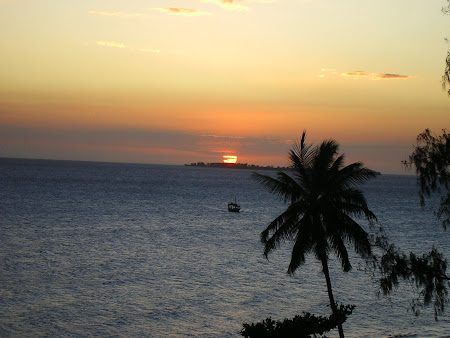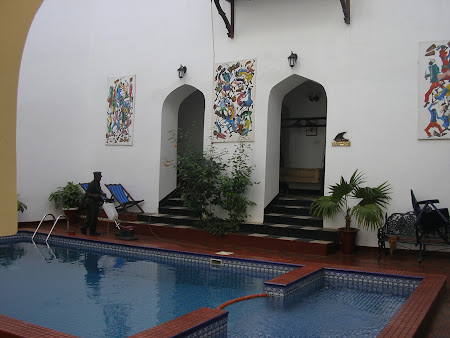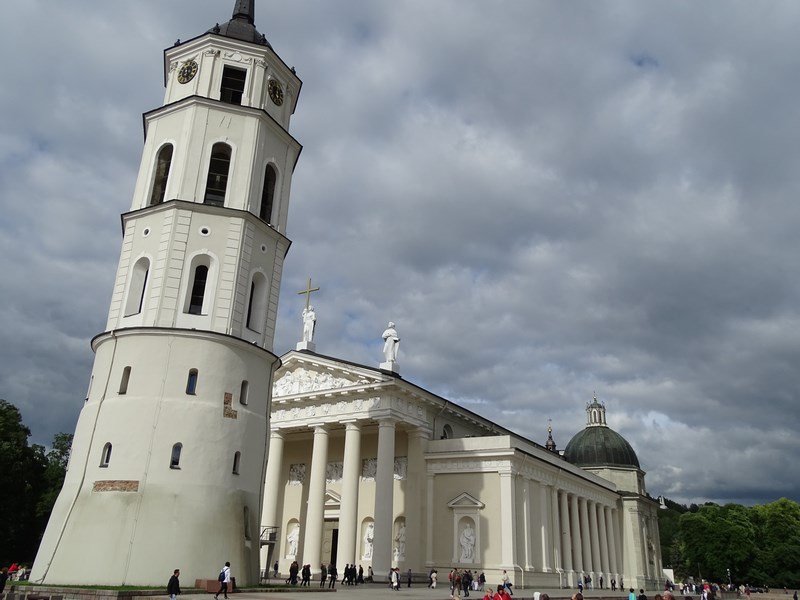Zanzibar – an Arab – African fusion
Get off the plane or ferry in Zanzibar and you will be transported in time and space – to the ancient kingdom of Persia, the Oman of the Sultans or on the West coast of India with its smells and rhythms. And this is because in Zanzibar, various civilizations and peoples met and merged, giving birth to a unique culture of the Black continent.
For many, Zanzibar is a holiday destination for recreation – sea, sun, beach, everything. Many are only transit passengers through Stonetown, the capital city of the island, preferring the idleness of the resorts scattered everywhere on the coast. I think they have things to lose because Stonetown is a fascinating city, where you can discover a fascinating culture.
But where does the name “Stonetown” come from? Being built out of stone or not wood, mud and cow dung like most African towns, the impressive stone walls have been a real shock for the Africans, so the city has got this distinguished name. In addition, the city is full of palaces, some bigger, some smaller, but all coming directly from the stories of the 1001 Arabian Nights. Arabian, here in Africa? Sure, because Zanzibar has long been an Arab sultanate.
In the 17th – 18th centuries, the Sultan of Oman takes over the archipelago. Once arrived in the area, he has a crush on the archipelago – arriving straight from the Arabian deserts where water is a luxury, the green Zanzibar was perceived as a real paradise. Once in paradise (the Prophet’s flag is also green), the Omanese did not want to return anymore. In fact, Sultan Said bin Sultan (1804 – 1856) had never returned in deserts, moving the capital of Oman to Zanzibar.
After the death of Sultan Said, the Oman empire was split between his two sons, in 1862, the Sultanate of Zanzibar became independent and then a British protectorate. Under the sultans, the wealth of Zanzibar will grow continuously, this being the main market of East Africa – be it even slaves brought from even thousands of miles away, ivory, gold, textiles or especially spices, everything used to be sold and bought (the slave market can be visited in Stonetown, where you can find a monument of slavery and an Anglican cathedral). Like everywhere in the British Empire, the British were followed by the Indians who took over the economic power in the archipelago. If the Arabs who held the political power and the fertile earth, were the spice manufacturers, the Indians were merchants who were selling spices in India and the Orient, and the Blacks were those who worked the land.
The Sultanate period was the golden era of the archipelago. Basically, walking through Stonetown, along the narrow medina-like alleys you can find in most Arab cities, you enter an amazing bazaar, enveloped in the smell of spices, the sound of the song “Hakuna Matata”, an immortal hit of East Africa where you can buy anything – from bowls and pots to Swahili-style paintings. You cannot help but notice the beautiful gates that brought worldwide fame to Zanzibar – the richer and the more successful you were, it was required to install yourself a gate as spectacularly adorned as possible. Today, there are over 500 gates in Stonetown which are considered art monuments, but, unfortunately, their number decreases continuously because of the art go-betweens that buy them at still modest prices.
But the Golden Age also has an end. All was overturned in 1963. Great Britain’s colonial empire was collapsing. In 1961, Tanganyika, the continental neighbor of Zanzibar achieved independence, opting for socialism. In late 1963, Zanzibar achieved independence, and one month later, the Blacks will take over power by means of a bloody revolution – thousands of Arabs and Indians are killed and those who escaped, were shipped on the frail dhow boats, in many cases, to death on the ocean. The survivors managed to reach the Kenyan coast or were picked at sea by the Omanese fleet. Those arriving in Oman were successful in business, and today Swahili (the language spoken in the archipelago) is the second language in Oman.
After 1964, a dark period follows in the history of Zanzibar. The large plantations were destroyed and agricultural production collapsed. The houses and palaces in Stonetown were looted and then abandoned. Tourists were prevented from coming (in the 1970s, only 1,000 tourists a year were allowed to visit the lush island), Zanzibar has fallen. Early revival occurred in 1992 when Tanzania, forced by the collapse of the communist system in Eastern Europe decided to give up Communism, lifting the iron curtain over Kilimanjaro. As everywhere, there followed a hunger for investments, and the former rulers of Oman returned to the archipelago, now playing the role of strategic investors. In fact, the most beautiful hotels in Stonetown are now superbly restored by the Omani. And visiting them, not only do you step in time, in history, but also in a select environment, full of luxury and good taste.
But let’s walk around the city. The nicest way to discover it is to pretend you get lost in Stonetown, with its white buildings, with meandering streets, with some impeccably restored areas and others about to collapse. You can visit the two palaces of the sultans, such as Beit El-Saleh (Palace Museum) where you can learn about Salma, an adventurous Zanzibar princess that, at the age of 16, was plotting to overthrow her brother, the Sultan, from power, then she escaped together with her German lover, finally settling in Germany. Here she wrote a book about European customs through the eyes of an African-Arab girl. Usually, Westerners write about distant and exotic countries, while there are hardly any books written by Asians and Africans discovering Europe. In this way, Princess Salma’s book is almost unique. The other palace is Beit el-Ajaib (The Palace of Wonders), thus called because, inside, the sultan installed an elevator, the first elevator on the black continent, a true wonder for everyone. Anyway, after visiting the two palaces, I cannot say that Zanzibar sultans lived in the opulent luxury that you can see in many oriental palaces … on the contrary – I think they were quite modest.
Although located quite far away, Zanzibar offers a tropical and cultural experience, combining natural beauty, the warmth of the sea with a remarkable unparalleled civilization. And if you choose to fly via Nairobi, the Precision Air company (a subsidiary of Kenya Airways) also gives you a bonus – the plane overflies the famous mount of Kilimanjaro, the highest peak in Africa at a very low height! And maybe you will think of conquering it one day!
Getting to Zanzibar
The planes to Zanzibar are generally expensive. Basically, if you find an offer for Nairobi, there are plenty of flights to Zanzibar from there, and if you find Dar-es-Salaam more affordable, you can reach it by ferry from there, too. Zanzibar is a favorite destination for the Italians, so you can find reasonable prices from Italy with the Air Italy and Neos.
Where to sleep in Zanzibar
There are super luxurious hotels at high prices, there are all inclusives on the island, away from Stonetown, but also guesthouses in the old town. I stayed with an Arab-African family in a guesthouse that was also their house.
Tanzania visa
Except Romanians and citizens of the neighbouring countries (Kenya, Uganda, etc), everybody needs a visa. The visa can be obtained on arrival at the airport, paying 50 US dollars.
Where to eat
There are many good restaurants in Stonetown. A dinner at Mama Africa watching the sunset is sensational, but do not miss the barbecues that sizzle at night near the sultan’s palace, either – many great seafood goodies, super fresh, taken out of the ocean that very day.
Pictures of Zanzibar:


























Great photos. My uncle has returned from Zanzibar, I am keen to hear his story, too. What are the photos with the women wearing the clothes of old days from?
They were from the Sultan family who governed Zanzibar for almost 200 years.
Not the same Sultan, obviously 🙂